Agriculture and Biosecurity newsletter: February 2024
Official launch of 5 Years Australian Industrial Hemp Program of Research
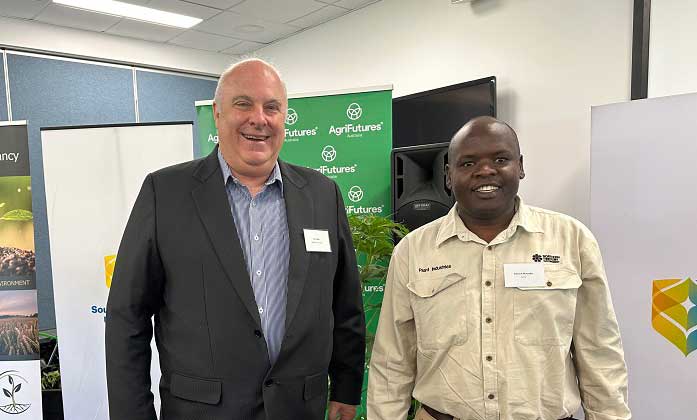
Caption: Ken Dods SAGE Consultancy and Edward Mwando Northern Territory Government.
Australian Industrial Hemp Program of Research (AIHPR) is led by Southern Cross University (SCU) and will be implemented by a number of interstate research partners. The program, guided by the Australian industrial hemp strategic RD&E plan 2022 to 2027, has 4 key themes of:
- seeds and varieties
- primary production
- products
- sustainability.
Northern Territory (NT) Government, building on the current 3 years National Industrial Hemp Variety Trials (IHVT) project - concluding in 2024, is leading hemp seeds and varieties (theme 1). Theme 1’s objectives include:
- scoping on key traits necessary to generate primary products
- a formal review of the IHVT to ensure representation of sites and traits
- variety trials for continued assessment of novel germplasm in tropical, sub-tropical and temperate zones
- develop a variety database linked to IHVT data.
Cropping Group of the NT Government is conducting high quality research to support the establishment of a sustainable farming system in the NT. Research efforts of the cropping group are aligned with the strategic plan 2021 to 2024 of Department of Industry, Tourism and Trade; recommendations of the Territory Economic Reconstruction Commission; and action items identified in agribusiness strategy 2030. Specifically, aligned with AIHPR, Cropping Group of the NT Government is trialling a number of industrial hemp varieties at different geographical locations in the Top End to determine their production potential. Results of the varietal trials are expected to offer an additional high value crop for establishing a sustainable cropping system in the NT.
Participation in this event was a great opportunity for Dr Edward Mwando and he got to meet most of the industrial hemp stakeholders, experts, researchers, and collaborating partners including industry players, state agents/departments and universities. New connections will lead to future collaborations.
Are you at risk of Q fever?

Q fever is an infectious disease endemic in Australia. It may be found anywhere.
Q fever is more commonly diagnosed in people and then retrospectively an animal source may be identified as the source of the infection. Common presenting clinical signs in people are similar to a severe flu such as muscle and joint pain, fever, headaches, fatigue and chills. A very small number of people may develop chronic Q fever. Not everyone who is infected develops clinical disease.
Coxiella burnetti is a bacterium that is spread between infected animals and humans by direct or indirect contact. People are usually infected by inhaling the Q fever bacteria, but entry through broken skin is also possible, particularly if handling tissues and fluids of infected animals. The bacteria survives in the soil, dust and air for a significant period of time and can be spread by wind, so the necessity to be near animals is not required. A wide variety of animals, with cattle, sheep and goats being more commonly the source, but also cats, dogs and marsupials (kangaroos), can be infected and show no clinical signs.
If you work with animals in any capacity or even in stockyards free of animals, and are over 15 years of age, talk with your health professional about a Q fever vaccination.
For further human health information, go to the Northern Territory Government website.
If you want to explore further into the complexities of Q fever read From Q Fever to Coxiella burnetii Infection: a Paradigm Change on the National Library of Medicine website.
Research supporting the establishment of a sustainable cropping industry in the Top End

Caption: Hand harvesting of cotton trial plots at Douglas Daly Research Farm.
The Northern Territory (NT) Government is working collaboratively with the Northern Cotton Growers Association (NCGA), Northern Territory Farmers Association (NT Farmers), Territorian growers and Charles Darwin University (CDU) is implementing the subject project. The project is aligned with the current needs of the NT cotton industry of improving productivity in a sustainable way. It will bridge the knowledge gaps in crop establishment, agronomy, biosecurity, technical skills, and provide an in-depth understanding of the social aspects associated with barriers to growth of the industry.
The project is co-funded by the NT Government, CRC for Developing Northern Australia (CRCNA), Grain Research and Development Corporation (GRDC) and Cotton Research and Development Corporation (CRDC).
- Project’s objectives include:
- Investigate solutions to unreliable cotton establishment via a structured and integrated research, development and engagement program developed in consultation with growers.
- Understand the impact of various crop rotation combinations on the productivity of cotton via evaluation of options with growers.
- Optimising nutrition in terms of quantity and time of application of major and minor elements and exploring alternative nutrient options.
- Investigating potential biosecurity risks associated with cotton and grain rotation systems.
- Characterizing and mapping the soil type and water holding ability at paddock level and at new potential cotton production sites for developing the enhanced cotton growth model.
- Determining social acceptance, and soil and landscape suitability for the NT Aboriginal titled land.
- Reviewing the alignment of the cropping system proposed by this project with the Territory's environment and regulatory frameworks.
- Assessing application of an economic decision support tool to aid growers' decision-making regarding the type of crops that are viable to develop economically efficient and ecologically sustainable farming systems.
The NT Government represented by a team of crop agronomists, entomologists, pathologists, microbiologists, and soil scientists is working closely with the Territorian growers and industry bodies for addressing the objectives 1 and 5 of the project. Cropping trials are being conducted at Douglas Daly Research Farm (DDRF), Katherine Research Station (KRS) and willing commercial properties in the Douglas region.
The NT Government will establish partnerships with Northern Land Council, Aboriginal Development Corporations and Indigenous communities for collaboratively achieving the project objective 6.
CDU represented by an ecological economist and a support staff is leading the project objectives 7 and 8.
The project involves a dedicated skill development in cotton management and stewardship program tailored to industry, researchers, and technical staff via a mixture of structured training as requested, visiting specialists, workshops, field days, conferences, and input/participation in R&D.
The project commenced in 2022/2023 cropping season with a crop rotation trial at DDRF and 2 nutritional trials replicated 3 times at both DDRF and KRS. Observation of farmers practice was done on 3 commercial properties. The rotation sequences comprised of continuous cotton, cotton- sorghum, cotton-cavalcade, and cotton-maize treatments. Six fertilizer treatment combinations including grower practice (basal broadcasting and 2 equal nitrogen (N) topdressings), basal banding, 1 and 3 N splits were evaluated.
Reduction in establishment, growth and yield of cotton crops were observed in research farms trials and in different fields of the commercial properties. The variations were mainly caused by environmental stress factors, including high temperature and too much or little moisture. During the season, all crops were scouted for pests and diseases where specific analysis and management recommendations were given. The rotational crops showed great potential except maize, which was seriously damaged by fall armyworm. The best fertiliser application combination was basal banded and 2 N topdressings.
A review was undertaken by the Department of Environment Parks and Water Services (DEPWS) on characterising and mapping soil water availability of the soil available data in the vicinity of the crop trial sites across the Douglas Daly Basin.
The review focused on existing land resource information including soil morphology data, soil analytical and soil hydrology data in the regions of interest as well as an overall data within the basin geomorphic boundary. Two fact sheets on cotton and peanut pests and beneficials and an info note on Solenopsis mealybugs (Phenacoccus solenopsis) survival on ratoon cotton crop were published. Project updates were presented to industry stakeholders at field days organised at DDRF by the project team and other collaborators, and also at NCGA annual general meetings.
In the current season (2023/2024), trials are being repeated at DDRF and KRS, and observations of farmer’s practice being done in the same 3 commercial properties as last season, plus one additional commercial property. Some adjustments were made on the treatments of the replicated trials in the second season at DDRF and KRS; nutritional trials were modified to remove 3 N splits that was not attainable because of the prevailing rain patterns, and soybean replacing maize in the rotational crops.
Another experiment to test the effect of different cover crops on the establishment of cotton was initiated. The cover crops treatments included millet and cowpea alone, millet and cowpea blend, and natural growth. Integrated Pest Management (IPM) trails are being conducted by the project’s entomologist through routine surveys and strategically placed insect traps on both research farms and all 4 participating commercial properties. Also, site selection and a detailed soil sampling for mapping and characterisation of water availability at paddock level is being undertaken by DEPWS.
This 4 years project is expected to achieve a number of outcomes over its lifecycle by recommending adoption of its findings that will be socially, environmentally, and economically sustainable for NT growers. The project is supporting a PhD student working on recycling cotton, grain and cattle wastes to develop mushroom based circular economy in the NT and the process of on-boarding another PhD candidate who will be working on NT cropping system (agronomy, soil and water relations focused) is underway.
The activities of this project are strategically planned as a vital component of CRCNA’s larger Cotton- Grain-Cattle program with the following intended outcomes:
- Develop skilled workforce and create opportunities for more jobs.
- Improve efficiency of the NT cropping supply chain.
- Support long-term investment in the agriculture sector of the NT.
- Increase economic activity in the region - that will result in increased GDP.
- Improve social, economic and environmentally sustainability of the communities associated with agriculture sector in the region.
Acknowledgments
The authors would like to acknowledge the financial support of the CRCNA, which is part of the Australian Government’s Cooperative Research Centre Program (CRCP) and co-funding organisations GRDC and CRDC. The team also acknowledges the support received from project partners and collaborators including NT Farmers, DEPWS, CDU, NCGA, Tipperary Station, and all commercial cotton growers in the NT.
Contact details
Edward Mwando
Mobile: 0470 259 875
edward.mwando@nt.gov.au
Bovine ephemeral fever

With recent wet weather across the Territory, bovine ephemeral fever (BEF) or ‘3 day sickness’ may become prevalent in the Top End, Katherine and Barkly regions.
BEF is spread by mosquitos and biting midges whose populations are largely weather dependant. When cattle are infected at a young age they usually recover and gain immunity. BEF tends to have more serious effects when cattle are first infected at older ages and can even cause death.
Generally, cattle that are affected will show clinical signs (lameness, stiffness, lying down, fever, possible shivering, and drooling) for about 3 days and then will recover. However, BEF can cause death, cows to abort and bulls to become infertile for several months. Treatment is based around supportive care and offering feed and water.
There is a vaccine available for prevention, it requires 2 doses given 4 weeks apart to give immunity, and immunity only lasts for one year. Therefore, due to the time and expense required to vaccinate the whole herd annually, it is usually only used for high value, susceptible animals (eg. bulls transported from areas where BEF is not common).
For further information refer to the 3 day sickness or bovine ephemeral fever agnote PDF (151.7 KB).
Empowering cotton research capacity in the Northern Territory
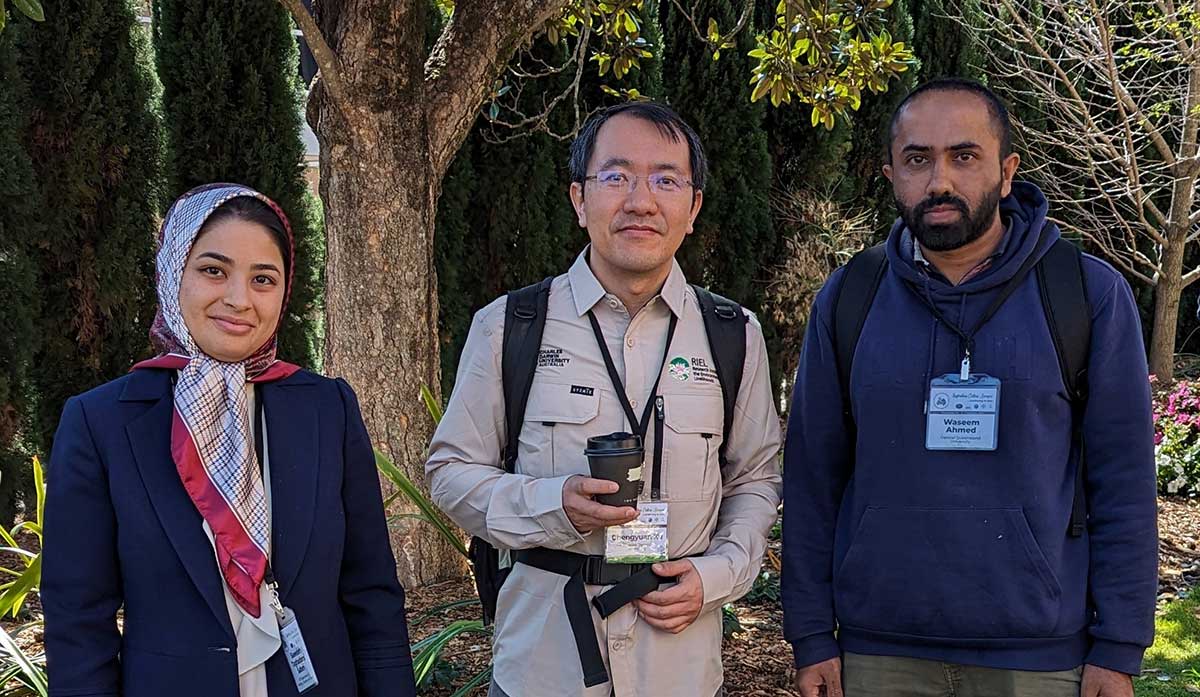
Caption: From left to right, Dr Saeedeh Taghadomi Saberi, Prof Stephen Xu, and Waseem Ahmed in the Empire Theatre’s Armitage Centre in Toowoomba. Prof Stephen Xu from Charles Darwin University is academic supervisor of Waseem Ahmed.
Saeedeh Taghadomi Saberi and Waseem Ahmed, from the Department of Industry, Tourism and Trade (DITT) of the Northern Territory Government participated in the Australian Cotton Research Conference - Continuing to Lead, in Toowoomba, Queensland from 5 to 7 September 2023. Participation of DITT associates was sponsored by travel awards of Cotton Research and Development Corporation and the event was hosted by the Association of Australian Cotton Scientists. This conference provided a valuable opportunity for the researchers to expand their knowledge and professional network within the Australian cotton industry.
The event covered a wide range of topics, from best practices adoption and technology's role in agriculture to insect pest management, water productivity, and the potential of gene editing in cotton. Furthermore, the conference explored applications of artificial intelligence, deep learning for cotton phenotyping, and AI-driven disease phenotyping, highlighting the industry's commitment to leveraging advanced technology for sustainable cotton production. Important aspects of agriculture, such as weed control, soil management, soil microbes, and the utilization of satellite data for decision-making, were also discussed.
Saeedeh and Waseem gained valuable insights into the latest developments in the cotton industry, and intend to apply their newfound knowledge to benefit the cropping sector in the Northern Territory.
Notably, the conference included a panel discussion on effectively communicating scientific advancements, emphasising the importance of sharing knowledge and findings with a broader audience. Additionally, it facilitated valuable networking opportunities, allowing Saeedeh and Waseem to connect with renowned experts in the field - to maintain for future collaborative research in the Northern Territory.
NT gravity survey Pine Creek
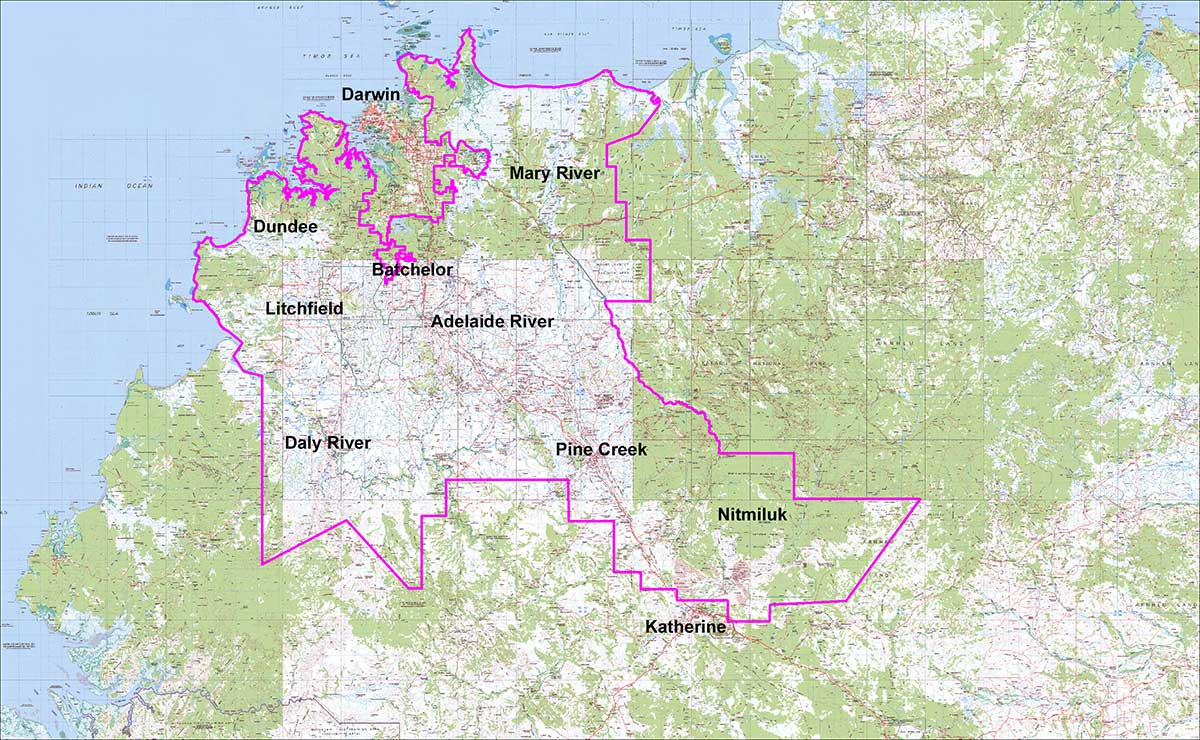
The Northern Territory Geological Survey within the Department of Industry, Tourism and Trade will be undertaking a gravity survey across the wider Pine Creek region starting in June 2024.
The survey will involve a helicopter landing every 2kms and taking a reading with a gravity meter. Spacing of landing stations may be closer in some areas. Each reading takes around 5 minutes.
There will be no ground disturbance.
Residential blocks and town properties will not be affected.
Gravity information is collected using a modern gravity meter, which is a device with a very sensitive spring to measure changes in the earth’s gravitational field. Gravity information is an important tool that will assist regional and national geological mapping and will contribute to updating the Australian gravity network.
Territorian jackfruit offering an array of essential minerals
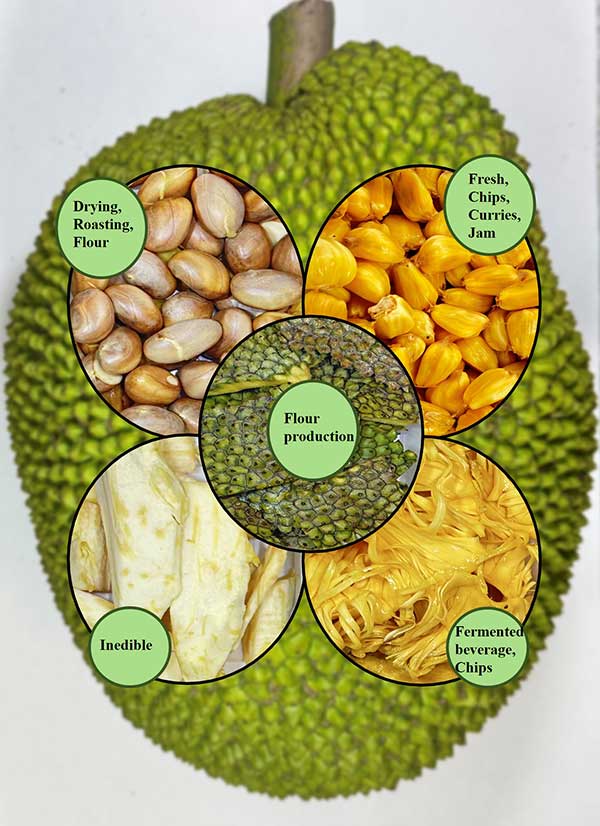
Have you ever wondered about the hidden treasures in a large spiky jackfruit? Well, a recent study revealed the mineral profile of 12 jackfruit types grown in the Northern Territory (NT). This research was conducted as a joint project of Edith Cowan University (ECU) and the NT Government. Research results were compared with the recommended dietary allowance (RDA) given by the Food and Nutrition Board. The RDA states the specific quantities of minerals required to maintain their optimum functioning in the human body. The study revealed the following fascinating insights:
- The major minerals in jackfruit pulp are potassium, magnesium and phosphorus and the 12 jackfruit types evaluated vary in their composition.
- Potassium is a crucial mineral element due to its role in maintaining acid-water balance and maintaining blood pressure in the human body. On average, 100g of jackfruit pulp provides about 19% of the RDA of potassium. However, the content of sodium is the lowest among the essential mineral elements quantified. Although sodium is a crucial mineral, it is only needed in small amounts and increased sodium intake is associated with elevated blood pressure and an increased likelihood of heart disease. Hence, jackfruit consumption is favourable for people suffering from hypertension.
- Additionally, phosphorus and calcium play multiple roles in human body and are crucial for the development of bones, and teeth. Present research demonstrated that 18% to 19% of RDA can be fulfilled by 100g jackfruit pulp, respectively.
- Moreover, anaemia caused by iron deficiency is a widespread health disease that affects 800 million women and children worldwide. The present study showed that 100g dried jackfruit pulp provides over 50% of RDA of iron. Therefore, jackfruit can be an important iron source, particularly for the vegetarian and vegan population.
- Cobalt, gallium, lithium, vanadium, iodine, and nickel were also examined in jackfruit pulp but these minerals could not be quantified due to lower amounts than the method detection limit.
This little explored fruit can be a future superfood due to its high nutritional content and can be a good alternative to the major staple crops in view of increasing global population. So, the next time you savour a delicious piece of jackfruit, know that you're not just enjoying a tropical delight but you're also giving your body a nutrient boost.
Utilising cotton waste to grow mushrooms
By Waseem Ahmed, Chengyuan Xu (Stephen) and Edward Mwando.

Caption: Paddy straw mushroom (Source: mushroomfarmsupplies.com.au)
New Gin Spurs Cotton Production Boost and Circular Economy, Alongside Sustainable Mushroom Farming for a Greener Tomorrow
Cotton production in the Northern Territory (NT), mainly (>98%) rainfed, has exceeded 10,000 hectares over the last few years, and is expected to reach 15,000 hectares this year. With the Western Australia Northern Territory (WANT) Cotton Gin near Katherine being operational, the NT cotton industry is expected to continue to grow in the near future.
Plant Industries Group of the NT Government has embarked on a collaborative project with the Cooperative Research Centre for Developing Northern Australia (CRCNA), focusing on recycling cotton, grain, and cattle waste to establish a mushroom circular economy in the NT. The project is being implemented as a PhD research investigation with Charles Darwin University (CDU).
Cotton crop waste, including stalks and leaves, cotton seed husks, and other by-products from the gin will be repurposed as substrates for mushroom production. This will not only mitigate the environmental impact of waste disposal but will also transform the waste materials into valuable commodities.
Mushrooms are nutritious and low-calorie food, packed with essential nutrients like vitamins B and D, copper, potassium, and selenium. They also offer antioxidants, dietary fibre, and proteins. With the unique ability to continue to grow - noting that mushrooms are the sixth most valuable horticultural crop in Australia and hold the third position as a prized fresh produce item in local stores.
From an environmental standpoint, transforming cotton waste into mushrooms will reduce the burden on landfills and promote a circular economy by reusing agricultural waste. Economically, it will generate new avenues for revenue, creating a symbiotic relationship between the cotton gin and mushroom cultivation. Moreover, socially, it will foster community engagement and collaboration toward a common goal of sustainable development.
After laboratory scale optimization of the cotton-based waste-substrate, the project is poised to expand its horizons by establishing a new mushroom industry in the NT. The objective is to cultivate various exotic mushroom species for sale in the local and interstate markets, with the eventual goal of extending operations to the export markets. The project aims to embrace a recycling approach, not only within the mushroom industry but also by extending this sustainable practice to other sectors, contributing to the boost in regional jobs and the economy - a greener tomorrow for the NT!
Acknowledgments
The authors acknowledge the financial support of the Cooperative Research Centre for Developing Northern Australia which is part of the Australian Government's Cooperative Research Centre Program (CRCP). The CRCNA also acknowledges the financial and in-kind support of the project participants
Indigenous Pastoral Program Seven Emu Station Water Project

The Indigenous Pastoral Program works to support and develop pastoral enterprises on Aboriginal lands in the Northern Territory providing increased opportunity and improved outcomes for Aboriginal people.
The team recently secured funding from the Indigenous Land & Sea Corporation (ILSC) to ensure improved water supply and security at Seven Emu Station in the Gulf Region of the NT.
Seven Emu Station comprises over 200,000 hectares of land owned by Mr Frank Shadforth who runs a cattle enterprise, eco-tourism business, and a booming bush food enterprise on the land. Seven Emu is also the base for 2 Youth Training and Work Pathways Camp programs.
The project will see $76,000 worth of funding to construct a new bore and solar pumping equipment at Seven Emu providing a safe, clean, year-round water supply supporting business operations and visitors to the region.
The Shadforth Family who have been running Seven Emu Station for 4 generations, can now avoid the potential risks associated with relying on a seasonal surface water supply.
This is an important milestone, and we are excited to see continued business development at Seven Emu from this project.
NAPCaRN leadership and training opportunities in 2024
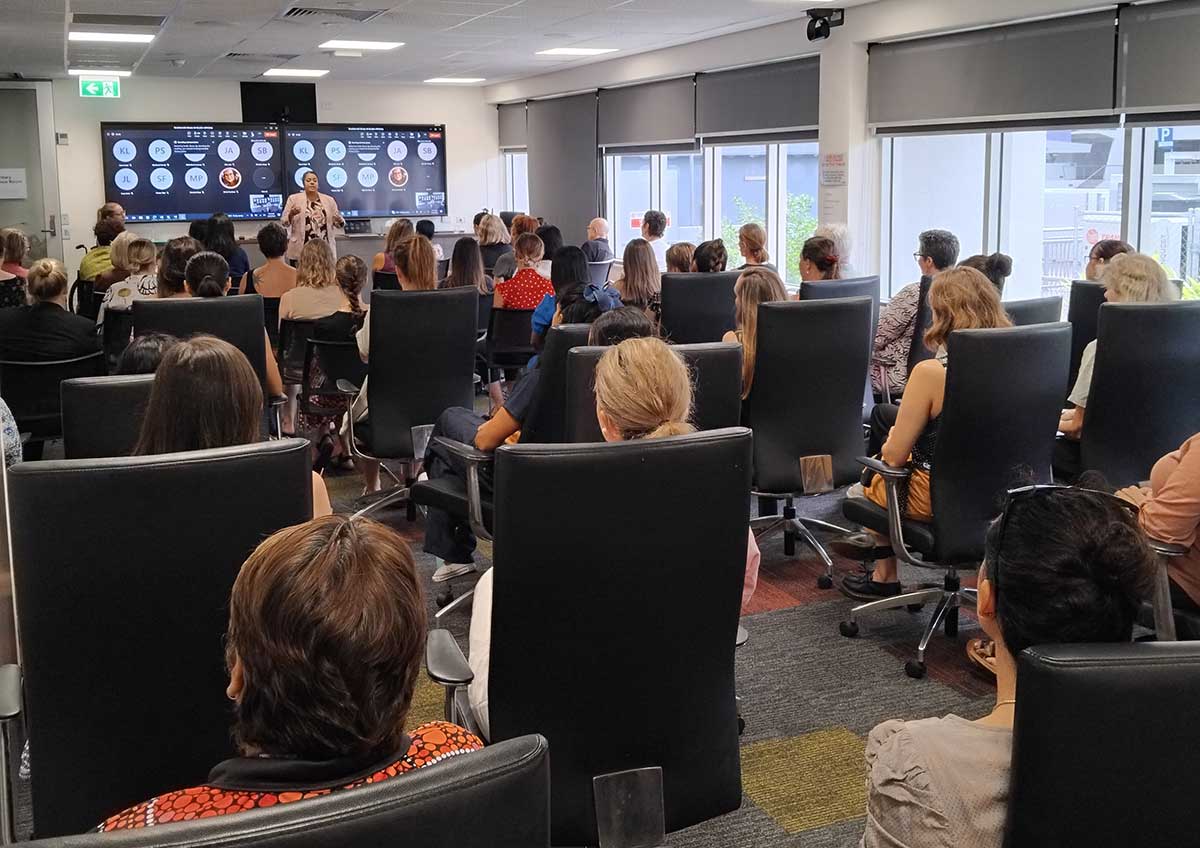
The Northern Australian People and Capacity Network (NAPCaRN) is focused on building people capacity in biosecurity across northern Australia. To achieve this, NAPCaRN is bringing a range of practical leadership opportunities to biosecurity stakeholders from government, industry and indigenous organisations in 2024. This includes training in:
- Self-awareness: tune in to awareness of self, awareness of others, building authentic relationships, and managing stress and wellbeing.
- Negotiation: learn negotiation skills to develop plans and implement influence and persuasion strategies to achieve win-win outcomes.
- Provision of advice and decision making: the program will focus on providing insight into the decision-making process and the psychology of decision making, with a focus on helping participants understand how they and those around them, make decisions.
- Governance: this training will prepare individuals to be an effective and successful member of a committee or working group.
The rollout of a pilot program aimed at increasing the number of First Nations people on boards and committees across northern Australia will commence this year. The program is open to First Nations individuals of any age, gender, cultural group, background, socio-economic status, job level or ability with the intent to promote the role of First Nations people in decision making.
In addition, the Lunch with Leaders series is continuing in 2024. The first session for the year was held on 2 February with guest speaker Minister Ah Kit. The recording will soon be available with all previous event videos on the Australian Government’s Department of Agriculture, Fisheries and Forestry website.
For more information on NAPCaRN training, monthly Lunch with Leaders sessions or to subscribe to the email distribution list, email nabs@aff.gov.au.
Freight Subsidy Disaster Assistance program to support primary producers
The Northern Territory Government with the support of the Commonwealth has activated the Freight Subsidy Disaster Assistance (FSDA) program to support primary producers recently impacted by flooding.
Financial assistance of up to $5,000 is available to support freight costs associated with transporting livestock and fodder, replacing or repairing buildings, equipment, machinery or fences.
You can apply online for the FSDA program through the GrantsNT website.
Give feedback about this page.
Share this page:
URL copied!